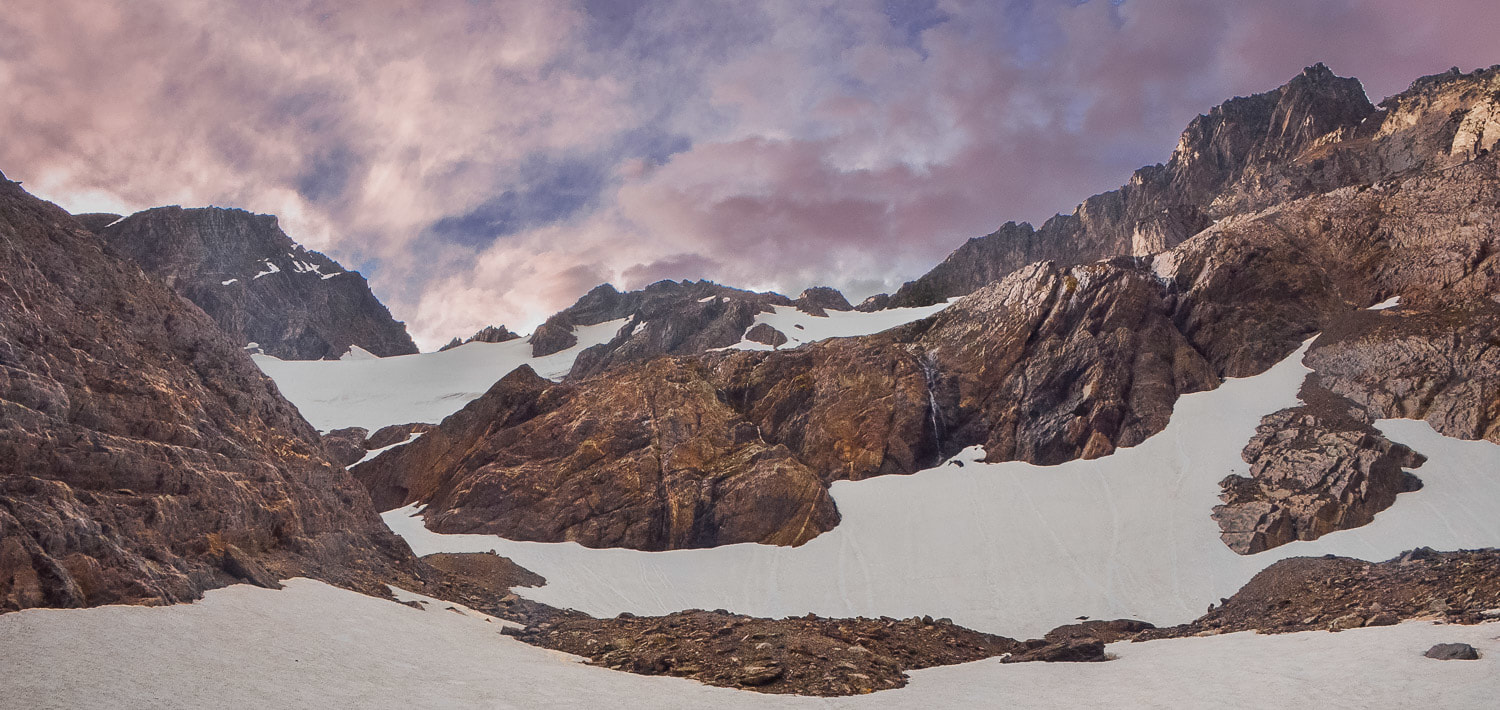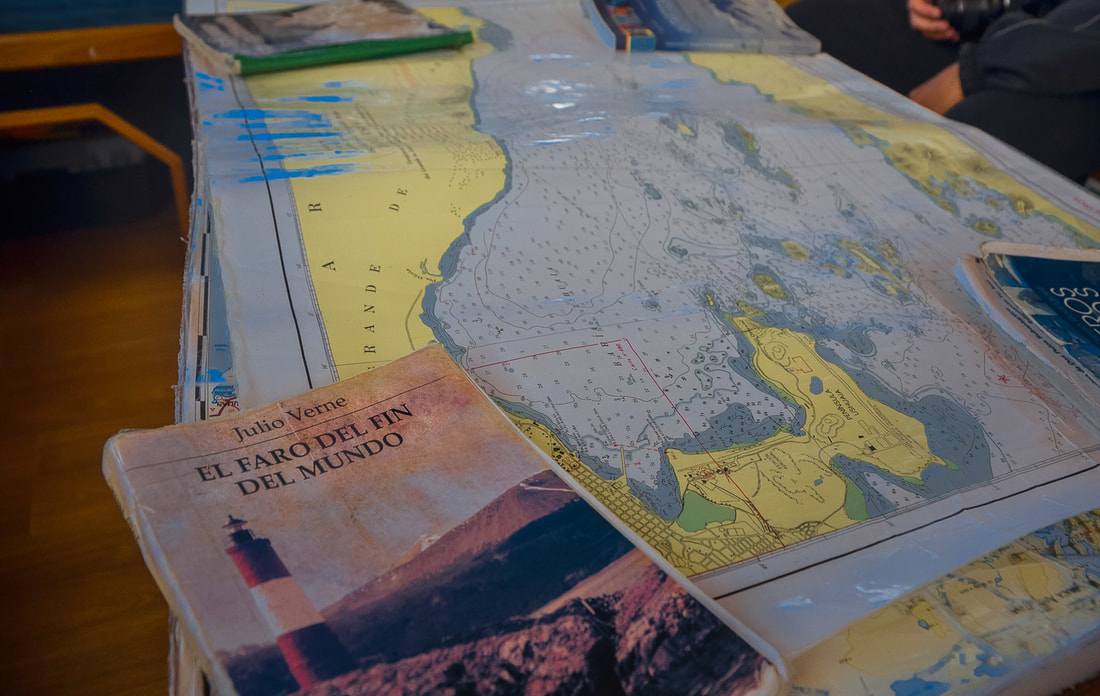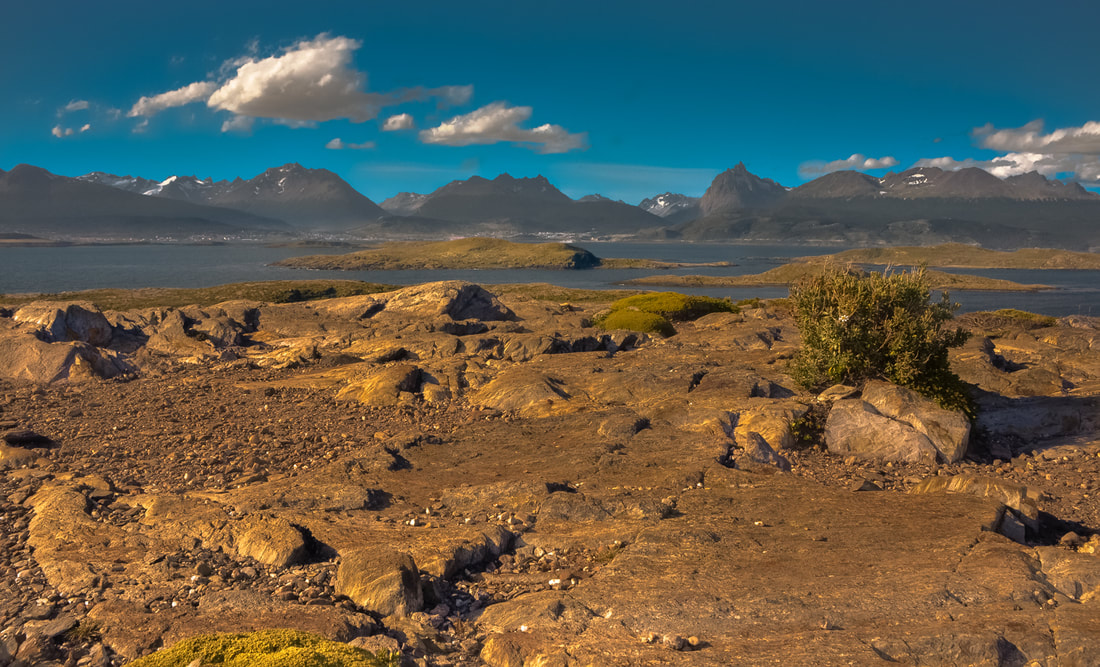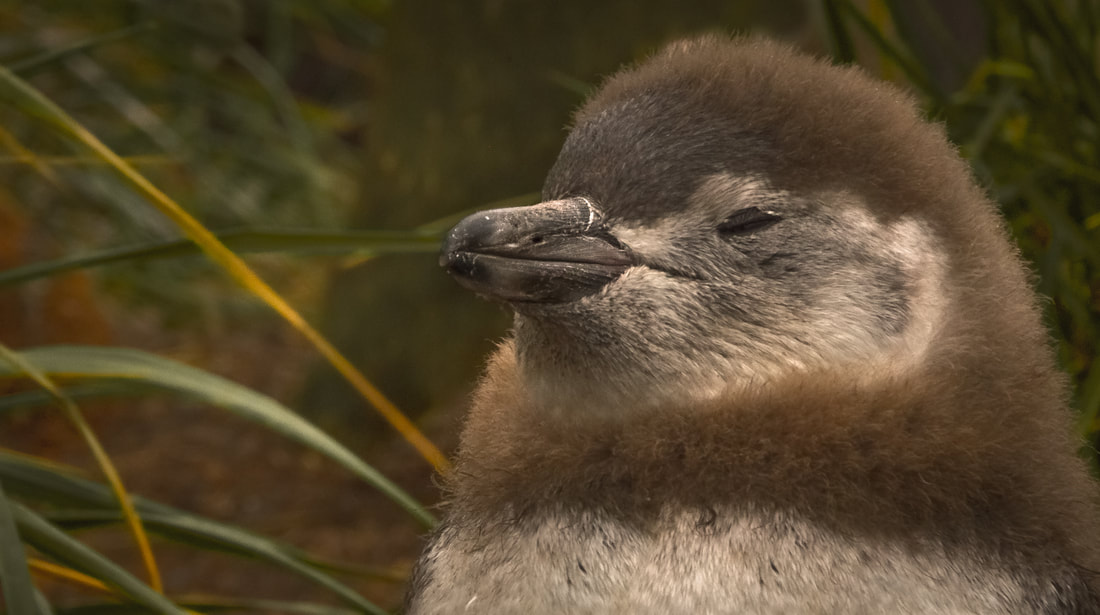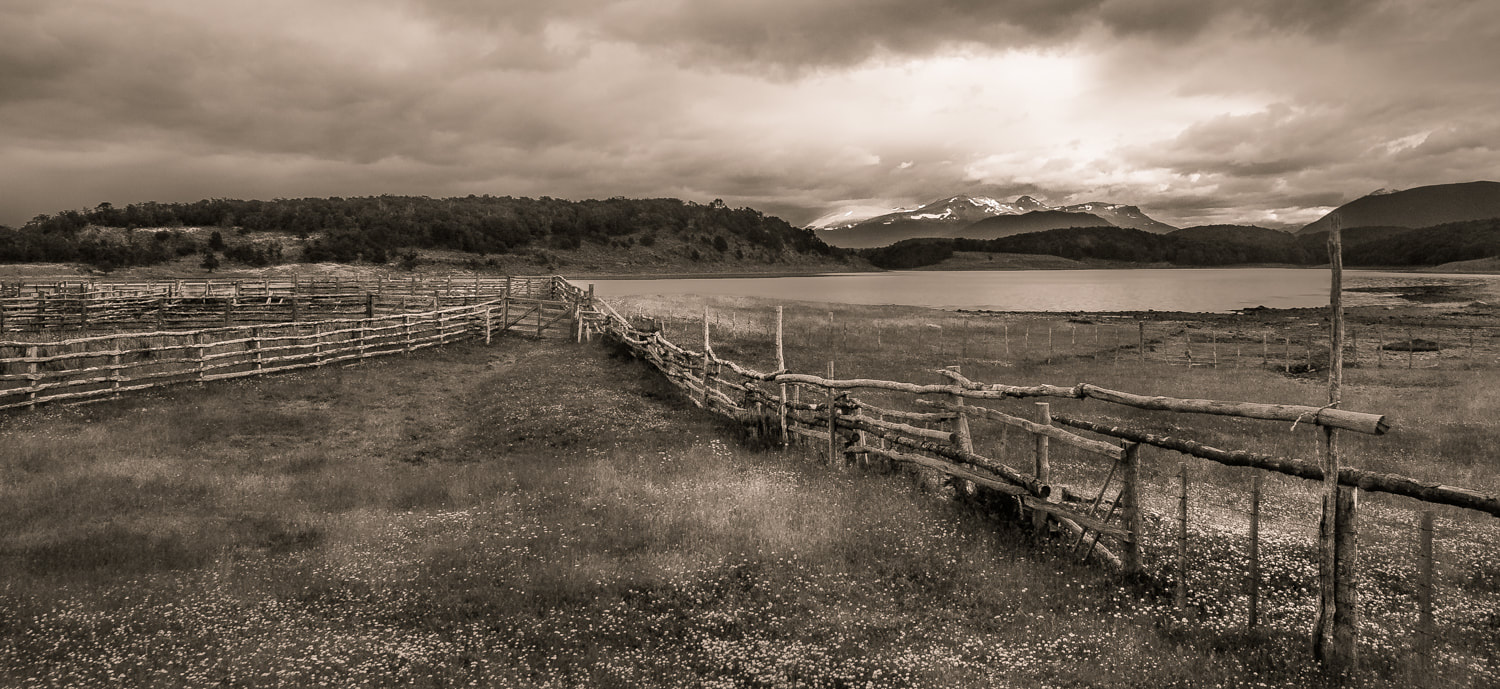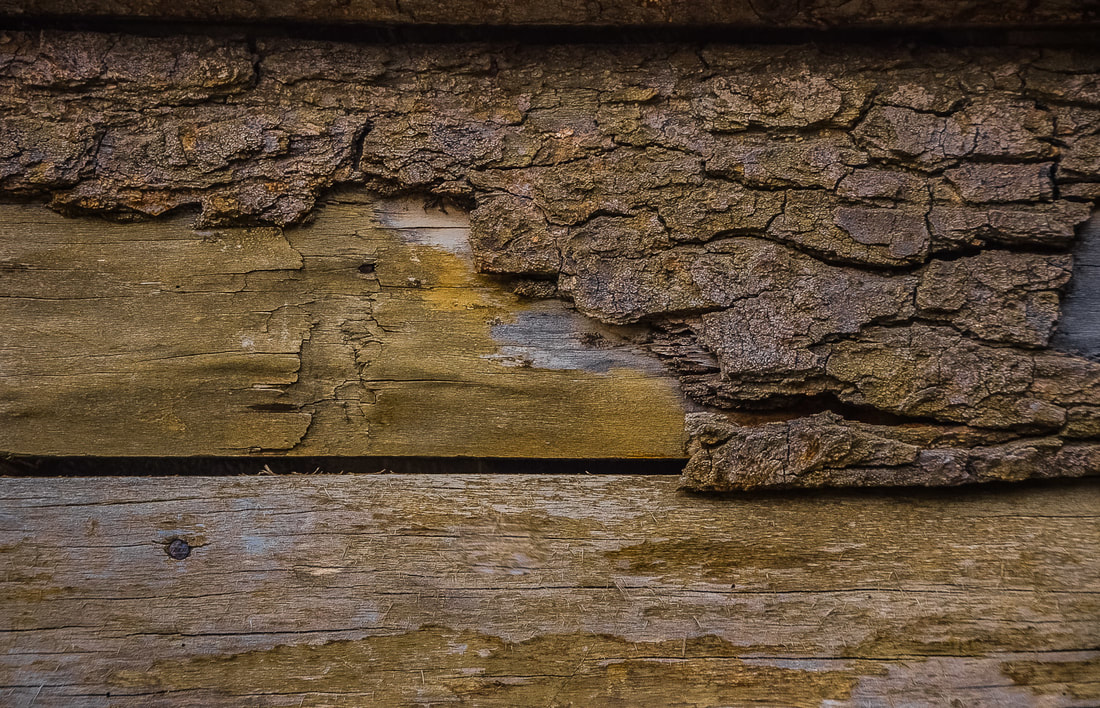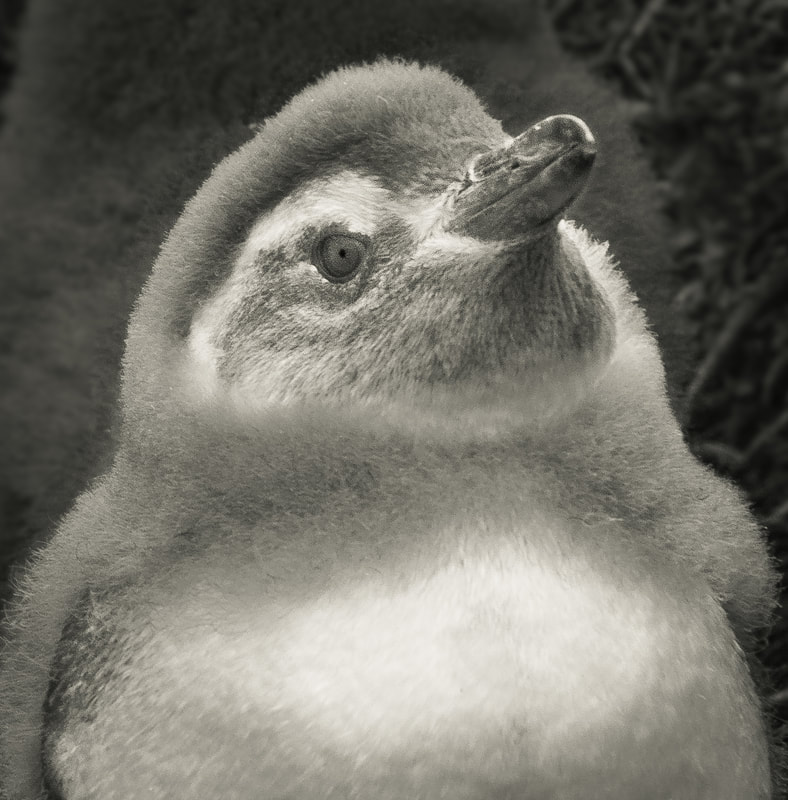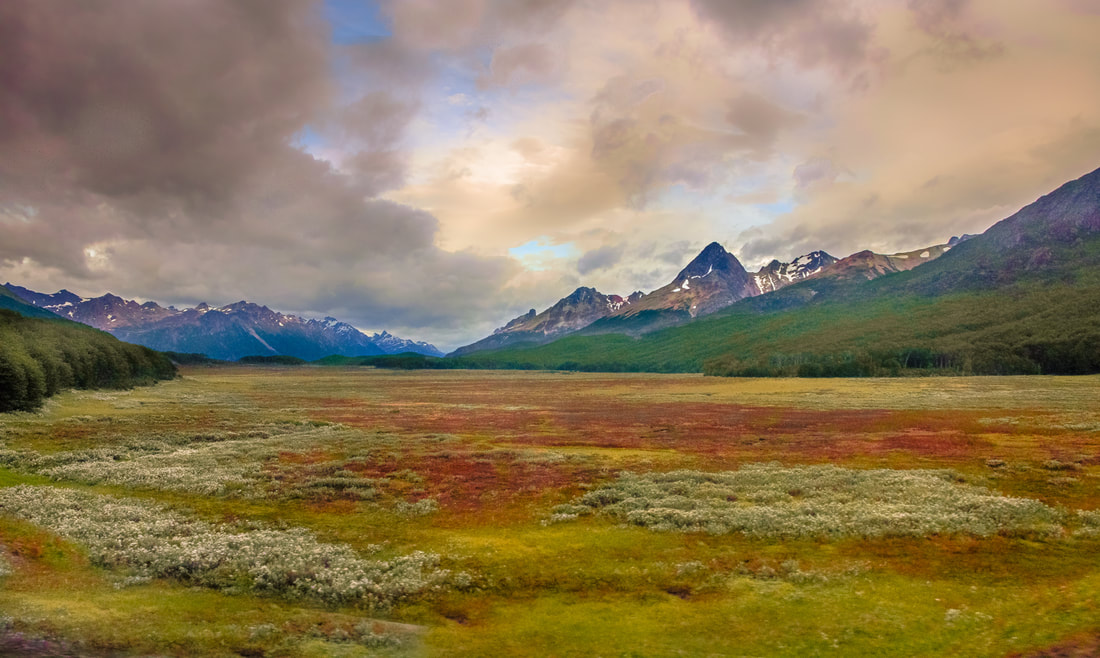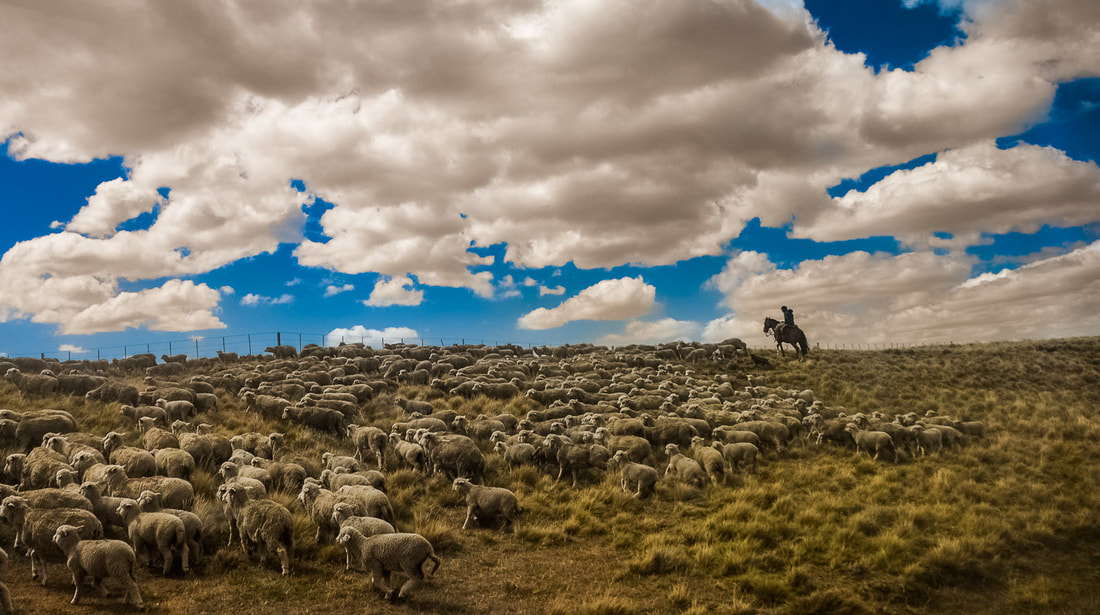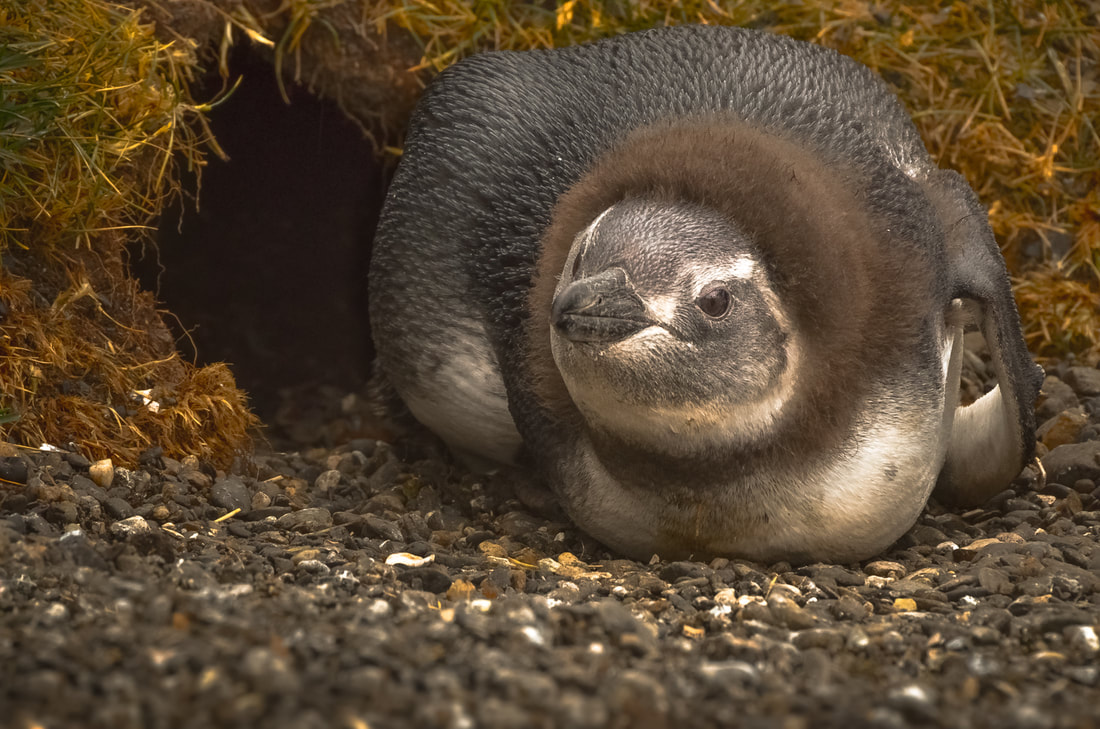"I want to stand as close to the edge as I can without going over. Out on the edge you see all kinds of things you can't see from the center."
-Kurt Vonnegut, American writer
January, 2016 - Time has long passed since I boarded that dust-covered, empty bus towards the world's end.
Part vast grassland and sky, part epic mountain and magic forest, the land of Patagonia makes it's geographic nest at the base of southern South America. My destination was the port of Ushuaia and its surrounding wilderness; launch site for Antarctic expeditions and exploration home base in the Tierra del Fuego (Spanish for "Land of Fire"). Ushuaia is about as far south as civilization goes before meeting the wild, icy waters connecting Frozen Continent at the bottom of our planet. Penguins swarm in the waves, and the high peaks of sheer cliffs scratch an untamable sky.
There good reason the town is called the "City at the End of the World."
Rugged and unique, everything from the rock formations to the waterways, the weather patterns to the glacial movements, the botanical variety to the indigenous history, is one-of-a-kind and iconic.
I traveled alone to the world's edge, and there I found beauty and wonder.
This is The Land of Fire.
Part vast grassland and sky, part epic mountain and magic forest, the land of Patagonia makes it's geographic nest at the base of southern South America. My destination was the port of Ushuaia and its surrounding wilderness; launch site for Antarctic expeditions and exploration home base in the Tierra del Fuego (Spanish for "Land of Fire"). Ushuaia is about as far south as civilization goes before meeting the wild, icy waters connecting Frozen Continent at the bottom of our planet. Penguins swarm in the waves, and the high peaks of sheer cliffs scratch an untamable sky.
There good reason the town is called the "City at the End of the World."
Rugged and unique, everything from the rock formations to the waterways, the weather patterns to the glacial movements, the botanical variety to the indigenous history, is one-of-a-kind and iconic.
I traveled alone to the world's edge, and there I found beauty and wonder.
This is The Land of Fire.
It's difficult for me to quantify or simplify Tierra del Fuego. Aged... Harsh... Textured... Epic... Remote... It's such an amalgam of so many varied and colored components that the idea of "summarizing" anything about Patagonia becomes a challenge.
Before reaching the town of Ushuaia, I stopped for a few days on La Peninsula Valdez, in Puerto Madryn. This shoreline of grasslands and dried mud once a year becomes one of the most densely populated whale migration points in the world. National Geographic, BBC, Discovery Channel, and Animal Planet have all filmed here for the spectacular displays that happen in the winter months. Unfortunately, it was summer when I arrived. I typically enjoy quiet times, but while I biked the coastal plains, I had to work a bit to appreciate the quiet that came with this particular off-season visit, knowing that with the small number of people, so also were whale sightings minimal at best. Few things can ruin a spectacle with the efficacy of a disrespectful traveler in tourist season, but at least there would have been a spectacle to ruin.
Before reaching the town of Ushuaia, I stopped for a few days on La Peninsula Valdez, in Puerto Madryn. This shoreline of grasslands and dried mud once a year becomes one of the most densely populated whale migration points in the world. National Geographic, BBC, Discovery Channel, and Animal Planet have all filmed here for the spectacular displays that happen in the winter months. Unfortunately, it was summer when I arrived. I typically enjoy quiet times, but while I biked the coastal plains, I had to work a bit to appreciate the quiet that came with this particular off-season visit, knowing that with the small number of people, so also were whale sightings minimal at best. Few things can ruin a spectacle with the efficacy of a disrespectful traveler in tourist season, but at least there would have been a spectacle to ruin.
And further south I went, for two straight days on a bus crossing from the shoulders of Argentina to its feet. It's a long way, and none too exciting. One quickly grows weary of the eternal grasslands stretching out from the rumbling road. Even the two boarder crossings to re-enter Argentina's Tierra del Fuego did little to break the monotony (two of the total six border crossings that were required to eventually see all of the Chilean/Argentine-shared Patagonia).
The plains slowly relinquished their overbearing visual monopoly, and stands of trees rapidly made way for forests, and the yellow sloping hills for jade-colored valleys of pine and mountains with lakes cradled between them.
Ushuaia lay beyond the mountain passes, past the Strait of Magellan in a large bay along the Beagle Channel. The town's small buildings and sprawling harbor hug the coast, and the severe line of trees separating the growing population from the surrounding woodlands is as distinct as a knife's edge.
The plains slowly relinquished their overbearing visual monopoly, and stands of trees rapidly made way for forests, and the yellow sloping hills for jade-colored valleys of pine and mountains with lakes cradled between them.
Ushuaia lay beyond the mountain passes, past the Strait of Magellan in a large bay along the Beagle Channel. The town's small buildings and sprawling harbor hug the coast, and the severe line of trees separating the growing population from the surrounding woodlands is as distinct as a knife's edge.
Daniel's friend from days-passed opened his home to me, which sits on the roots of a mountain, near a valley housing a small glacier. The next week was spent in full exploration mode, returning to the house only to eat, work, and sleep.
I hiked to the the glacier, traversing its icy surface and discovering trails spanning across the valley itself. I walked out of the small city as well, to tree stands along the bay where the incessant wind blew with such fury that the trees' branches grow sideways in the gale, like an unfurled flag frozen in motion. I climbed mountains with smooth slate rock gullies and navigated to lakes created by beaver dams, visited shops selling Antarctic gear, and took a ship to the inlets and straits in the bay, seeing the "lighthouse at the end of the world," where I observed basking sea lions and armies of cormorants on their isolated islands at sea.
I hiked to the the glacier, traversing its icy surface and discovering trails spanning across the valley itself. I walked out of the small city as well, to tree stands along the bay where the incessant wind blew with such fury that the trees' branches grow sideways in the gale, like an unfurled flag frozen in motion. I climbed mountains with smooth slate rock gullies and navigated to lakes created by beaver dams, visited shops selling Antarctic gear, and took a ship to the inlets and straits in the bay, seeing the "lighthouse at the end of the world," where I observed basking sea lions and armies of cormorants on their isolated islands at sea.
Nearly all of these adventures I undertook on foot. With grit and time, I could access most of what I wanted by myself. For longer distances, I opted to save money and hitchhike, practicing my Spanish. Even the boat I found to see the channel came at a decent bargain.
Inconveniently, one of the trip highlights that I was looking forward to was inescapably expensive...
Penguin Island is a colony of Magellanic penguins in the Beagle Channel. It is inconvenient because the island is privately owned, and therefore the only way to arrive is to submit to the owner's rules. I'm in favor of protecting habitats, and therefore justified the $60 expense. Although I did wince repeatedly.
I'm so glad that I went.
I never really understood the whole "penguin" thing, until I saw them for myself in their natural surroundings.
These goofy guys bounce around, waddling and squawking and nipping and tumbling over themselves like toddlers at day care. They seem so silly and amusing, with their flippers held outwards to balance their tottering trots about their nesting grounds.
The flocks of recently hatched chicks were by now fattened and starting to molt their juvenile down feathers, which added to the humor of their appearance while they hesitantly moved further and further from their nests and ground dwellings.
When they entered the water, however, all clumsiness vanished as their sleek bodies sped through the shallows like torpedoes that turn on a dime. Their velocity and agility naturally amazed me.
I found it extremely difficult to put my camera away, even as rain began to fall from a heavy sky... What follows is no shortage of shots for our finely flippered friends!
The roadways to and from Ushuaia to the island's closest land point took me through some of the most grand and gorgeous landscapes I've yet seen. The splendidly colored Valle de los Lobos spread spectacularly between two sharp ranges ("Valley of the Wolves," a location still utilized to train the hugely fluffy malamute dogs for the winter sled runs). The water channel's edge abutted sloping pastures empty of livestock, but rich with well-fed flora from the frequent rains.
Out last stop before boarding a boat was a stretch of historic farmland. Well-worn, rustic textures adored nearly every surface, bearing the marks of a mercilessly assaulting weather stream, from ferocious storms to billowing gales and heavy snow. The lupine flowers were in full bloom, fanning out their own vivid spectrums across the farmyard.
Inconveniently, one of the trip highlights that I was looking forward to was inescapably expensive...
Penguin Island is a colony of Magellanic penguins in the Beagle Channel. It is inconvenient because the island is privately owned, and therefore the only way to arrive is to submit to the owner's rules. I'm in favor of protecting habitats, and therefore justified the $60 expense. Although I did wince repeatedly.
I'm so glad that I went.
I never really understood the whole "penguin" thing, until I saw them for myself in their natural surroundings.
These goofy guys bounce around, waddling and squawking and nipping and tumbling over themselves like toddlers at day care. They seem so silly and amusing, with their flippers held outwards to balance their tottering trots about their nesting grounds.
The flocks of recently hatched chicks were by now fattened and starting to molt their juvenile down feathers, which added to the humor of their appearance while they hesitantly moved further and further from their nests and ground dwellings.
When they entered the water, however, all clumsiness vanished as their sleek bodies sped through the shallows like torpedoes that turn on a dime. Their velocity and agility naturally amazed me.
I found it extremely difficult to put my camera away, even as rain began to fall from a heavy sky... What follows is no shortage of shots for our finely flippered friends!
The roadways to and from Ushuaia to the island's closest land point took me through some of the most grand and gorgeous landscapes I've yet seen. The splendidly colored Valle de los Lobos spread spectacularly between two sharp ranges ("Valley of the Wolves," a location still utilized to train the hugely fluffy malamute dogs for the winter sled runs). The water channel's edge abutted sloping pastures empty of livestock, but rich with well-fed flora from the frequent rains.
Out last stop before boarding a boat was a stretch of historic farmland. Well-worn, rustic textures adored nearly every surface, bearing the marks of a mercilessly assaulting weather stream, from ferocious storms to billowing gales and heavy snow. The lupine flowers were in full bloom, fanning out their own vivid spectrums across the farmyard.
Needless to say, the cawing, clambering crew of beaked buddies became a favorite of mine. Even over a year later, they earn a five-star rating for entertainment!
I found myself falling a little in love with Ushuaia. The companionship of civilization and wildlife seemed rather balanced, and the sensational uniqueness of the place could not be disputed. All the same, for all that I loved it, there was more to see on the road ahead!
I found myself falling a little in love with Ushuaia. The companionship of civilization and wildlife seemed rather balanced, and the sensational uniqueness of the place could not be disputed. All the same, for all that I loved it, there was more to see on the road ahead!
The time came for me to travel northerly, and see the remaining pieces of Patagonia's wonderland. Daniel would be meeting me a 28-hour bus ride and two border crossings away, in the gateway to a trekker's paradise: Torres del Paine.
Explore the world. Make it better.
If you in any way enjoyed this post, or for information how to help us on our way, see our How to Help page for links, videos and more.
Like the photography?
There is more to see than a post has room for!
Click the links and take a gander at our internal gallery or Instagram account!
LOVE it? Visit Daniel's store here!
There is more to see than a post has room for!
Click the links and take a gander at our internal gallery or Instagram account!
LOVE it? Visit Daniel's store here!
So... Where were we????


















